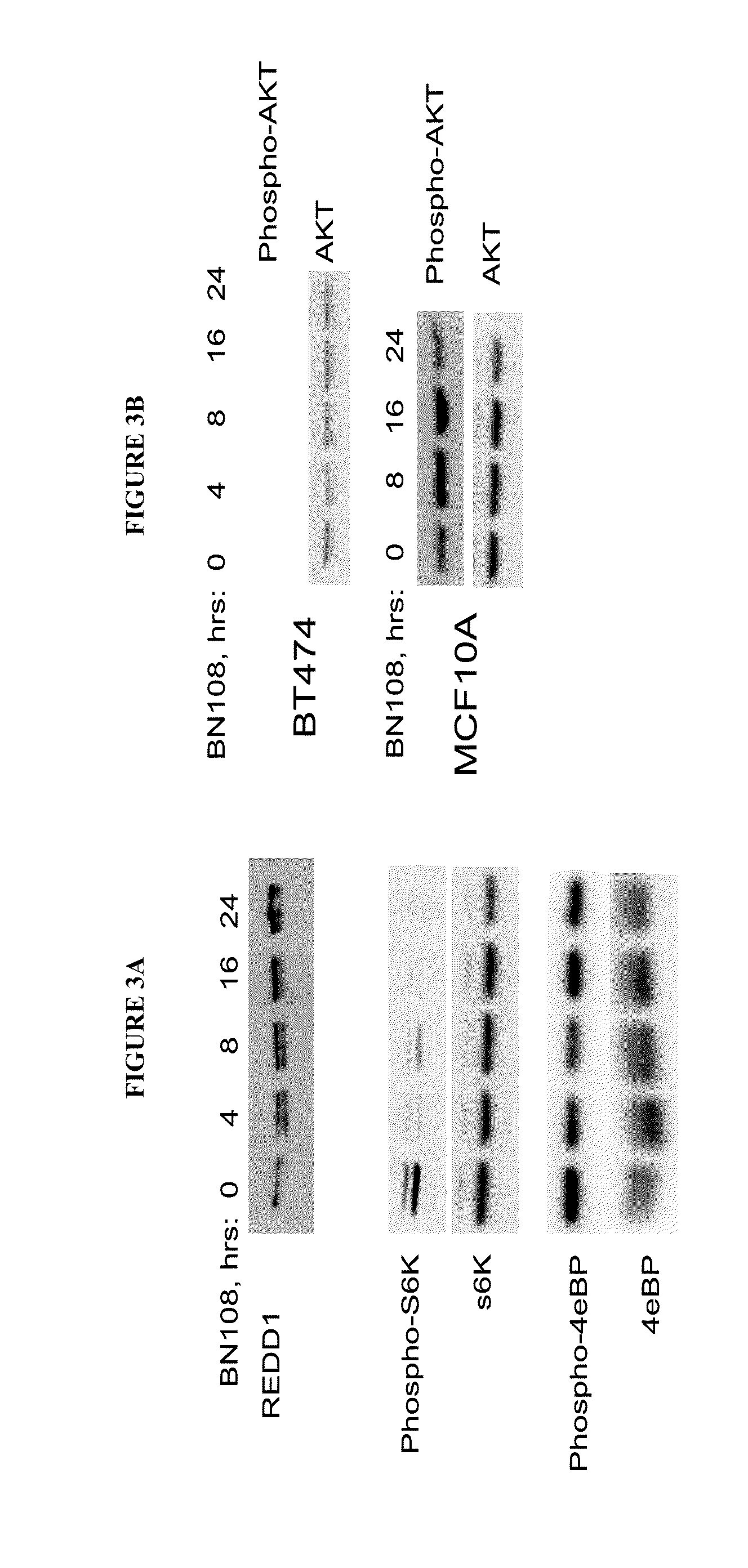Anticancer Methods Using Extracts of Anemarrhena asphodeloides Bunge
an extract and anticancer technology, applied in the field of plant extract compositions, can solve the problems of ineffective current treatment, inconvenient screening, and toxic side effects, and achieve the effects of improving the survival rate, and improving the survival rate of breast cancer patients
- Summary
- Abstract
- Description
- Claims
- Application Information
AI Technical Summary
Problems solved by technology
Method used
Image
Examples
example 1
In Vitro Studies
[0099]Plant extracts of Anemarrhena asphodeloides Bunge selectively induce apoptosis in cancerous cells. As can be seen in FIG. 1, tumor and non-transformed cell lines and cells were treated with a solution comprising 0.5 mg / mL of dried extract of Anemarrhena asphodeloides Bunge. (The solution containing 0.5 mg / mL of dried extract of Anemarrhena asphodeloides Bunge is also referred to herein as BN108.) FIG. 1 shows the percentage of cells that bound Annexin V after 24 hours of treatment for three breast cancer cell lines, three prostate cancer cell lines, three immortalized mammary cell lines and normal fibroblasts. The percent apoptosis rate for BN108-treated breast and prostate cancer cells ranged from 20% to 80%, while the percent apoptosis rate for BN108-treated immortalized mammary cells was negligible and for BN108-treated normal fibroblasts was less than 10%. Thus, it can be seen that BN108 induced apoptosis in cancer cells but not in normal cells and non-canc...
example 2
Isolation of Timosaponin A3 and Timosaponin B2 from an Extract of Anemarrhena Asphodeloides Bunge
[0105]Timosaponin A3 and Timosaponin B2 were separated from an extract of Anemarrhena asphodeloides Bunge as described in general herein above. The isolated Timosaponin A3 and Timosaponin B2 were characterized by GC Mass Spec as described herein above.
example 3
In vitro Experiments with Timosaponin A3 and Timosaponin B2
[0106]The effect of Timosaponins A3 and B2 on the viability of breast cancer cells and normal epithelial cells was tested by treating cells with either 0.5 mg / mL BN108, 4 μg / mL Timosaponin A3, 50 μg / mL Timosaponin B2, inactivated lamarinase alone or lamarinase-treated Timosaponin B2 (4 μg / mL) for 24 hr. As can be seen in FIG. 5, BN108 and Timosaponin A3 (“Tsp A3”) induced cell death in BT474 cells, whereas Timosaponin B2 (“Tsp B2”) and lamarinase alone did not induce cell death in BT474 cells, and treatment of 4 μg / mL Timosaponin B2 with lamarinase resulted in nearly as great an induction in cell death in BT474 cells as was induced by 4 μg / mL Timosaponin A3. The difference in activity between Timosaponin A3 and lamarinase treated Timosaponin B2 is, on a molar basis, probably negligible, given that the quotient of the molecular weights of Timosaponin B2 (920 Da) and Timosaponin A3 (740 Da) is roughly equivalent to the ratio o...
PUM
 Login to View More
Login to View More Abstract
Description
Claims
Application Information
 Login to View More
Login to View More - R&D
- Intellectual Property
- Life Sciences
- Materials
- Tech Scout
- Unparalleled Data Quality
- Higher Quality Content
- 60% Fewer Hallucinations
Browse by: Latest US Patents, China's latest patents, Technical Efficacy Thesaurus, Application Domain, Technology Topic, Popular Technical Reports.
© 2025 PatSnap. All rights reserved.Legal|Privacy policy|Modern Slavery Act Transparency Statement|Sitemap|About US| Contact US: help@patsnap.com



